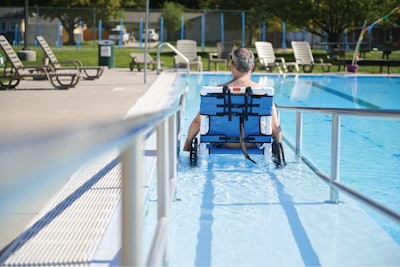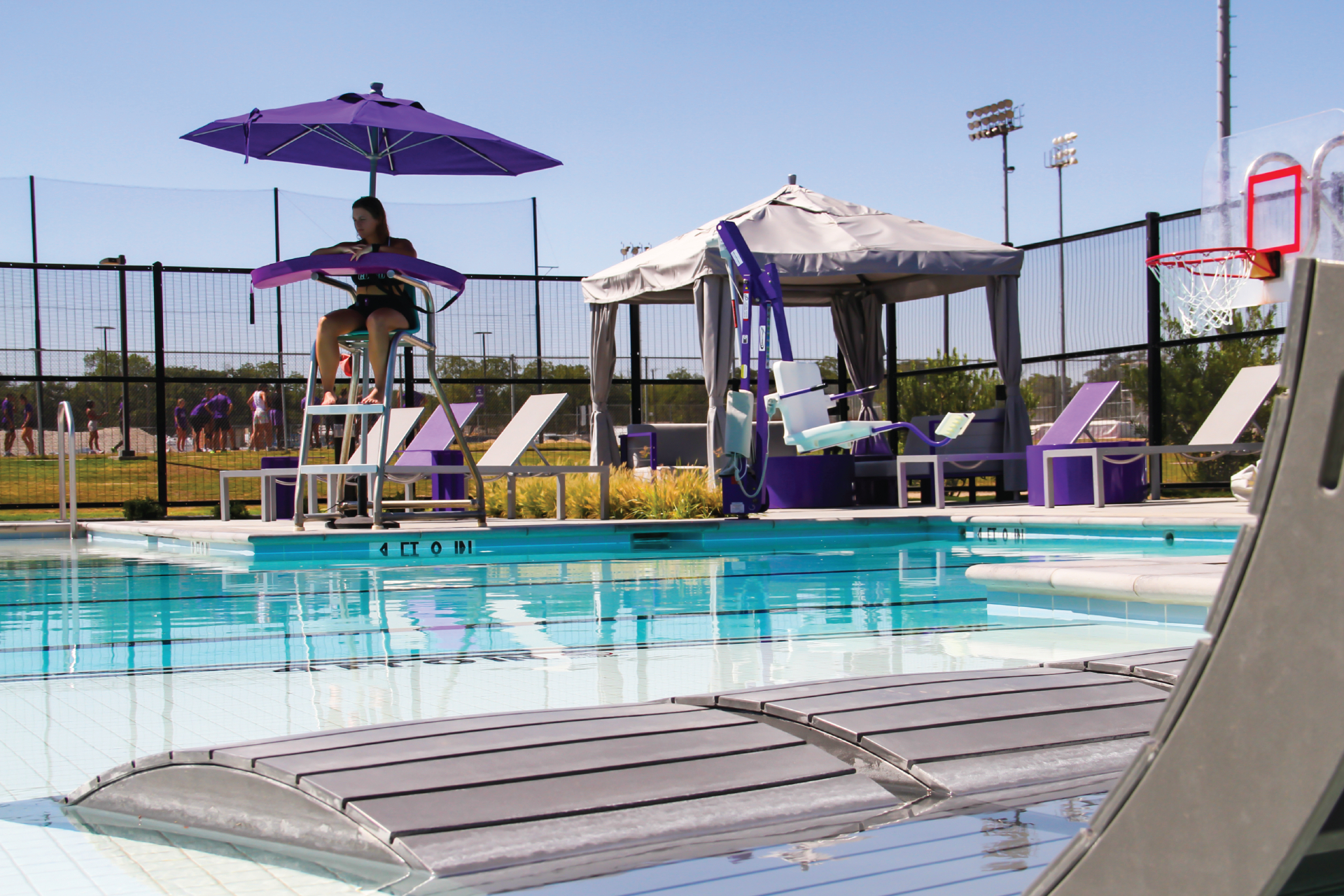
Water: it makes up over half of the human body, covers over 70 percent of the entire world, and is essential to all living things. Since the beginning of time, people have been drawn to the water and its natural healing abilities — and for good reason. This instinctual draw to water has today evolved from ancient healing bath houses, to the modernized and science-driven aquatic therapy that is seen today. What was once thought to be reserved for only the most privileged and wealthy can now be found in 10.4 million backyards throughout the United States alone. Pools are a place where communities come together, where athletes can crank up resistance, and where physical therapy allows patients to move in ways never previously thought possible.
The Ultimate (Often the Only) Therapy Solution
Today’s society is in a place of increased health awareness, perpetually seeking more unique and effective ways to improve quality of life. While aquatic therapy has indeed been around for a long time, it’s only recently risen to become one of the most effective forms of physical therapy - especially for people with limited mobility and neurological diseases.
Mike Tran, Physical Therapist at the Community Medical Center in Missoula, Montana, says that sometimes, it’s the only option. He emphasizes the importance of the equipment that makes aquatic therapy possible:
“We get a lot of patients where the pool is really the only safe, non-weight-bearing environment for them, and we use it every day. The pool adds such a soothing and therapeutic environment to aid in recovery, and there are so many patients who would not be able to utilize the pool at all without a pool lift; the lift becomes not a convenience, but a necessity. It’s invaluable.”

Innovating for Inclusion
As aquatic therapy increases in popularity, industry manufacturers are focused now more than ever on developing equipment that not only facilitates recovery, but allows people of many different abilities to take advantage of its benefits. Historically, pools were very much designed to cater only to able-bodied persons; oftentimes, leaving the people who needed the water the most unable to access it. However, since the 2010 Americans with Disabilities Act (ADA) revisions were written to include swimming pools, a major shift in societal thinking has been paving the way for more and more people to be able to enjoy all the benefits aquatics have to offer. The wonderful thing about the water is that it’s not only a place for low-resistance therapy; it’s also an incredible full-body workout.
Athletes of All Abilities
The wonderful thing about the water is that it’s not only a place for low-resistance therapy; it’s also an incredible full-body workout. While on one hand its buoyancy can be used to aid mobility, on the other hand, its natural resistance can also be used to increase workout efficiency. Because water offers 12-14 times more resistance than land exercise alone in addition to aiding in body temperature regulation, athletes from all around the world utilize aquatic training in their regular routines. Innovations in aquatic fitness equipment such as swim spas and underwater pool bikes help fitness professionals take advantage of these benefits in fun and unique ways that help them target different muscle groups. New studies have even shown that regular aquatic exercise can improve heart health and cardiovascular strength, improve balance and flexibility, and build endurance.
Mind, Body and Soul
Studies have also shown that swimming can even improve mental health. It is known that decreased physical activity is directly correlated with increased levels of depression. So, it stands to reason that people with limited mobility might very likely struggle the most with the inability to do the one thing they need to improve their mental health - and therefore, would benefit immensely from an activity that allowed them to move easily and without pain. Especially during winter months, when people of all ages and abilities tend to decrease their physical activity, swimming can be an excellent way to fight seasonal depression.
The benefits of aquatic therapy and exercise are innumerable, and thanks to modern science, our society is constantly learning more about its magical properties and the way it can benefit humanity. Living in a world where information is always right at the tip of one’s fingers, it is not knowledge that holds back the further development of these revelations, but the physical barriers that continue to deny access. Together, let us strive towards a commitment to inclusion that allows people of all abilities to enjoy and benefit from that magical place we call water.
For more information, visit aquacreek.com.








